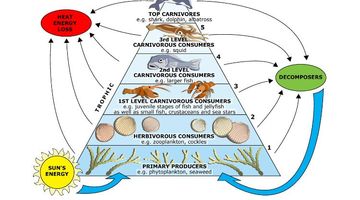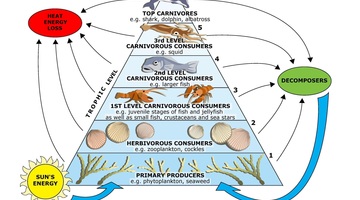In this video, Associate Professor Stephen Wing, from the University of Otago, talks about how our understanding of food webs has changed over the years. We now have a much better understanding about the complex networks of interactions between organisms and the place of humans in the food web.
Point of interest
Think about where the fish in your meal of fish and chips comes from. Where does it fit in the marine food web, and what other species is it linked to?
Transcript
ASSOC PROF STEPHEN WING
The more we learn about food webs, the more we understand that many things in nature are connected. And if you look back just 50 years or so, people’s perceptions of how food webs work were quite simple. You’ve probably all seen the picture of the little fish being eaten by the bigger fish being eaten by the bigger fish, and this sort of linear transfer of energy in a marine system. It turns out, when we study those systems more closely, it’s really a network of interactions, so many different creatures interacting with each other in terms of feeding on each other. If you value your own place in the food web, knowing about how it works is possibly very important. We are in the food web, and we rely on all the services that it provides. So, for example, if you eat a meal of fish and chips, the fish you ate relies on all the organisms that have produced that fish, and those are the invertebrates and krill and other little fish, and those little fish rely on a whole host of zooplankton and then they rely on phytoplankton and macroalgae. Our place in the food web is intimately linked to all of these organisms, and understanding how food webs work is key to predicting what might happen in environments as they change or as we affect them either directly through exploitation or indirectly through changes in the environment. In Fiordland, one of the outcomes of understanding the food web better and understanding how things are arranged better was to inform policy or to inform management of the resources in Fiordland. And this happened in 2005 through a Parliamentary Act, which set up parks and reserves for different parts of Fiordland to protect them from some of the adverse effects of fishing or from human activities.
Acknowledgements:
Dr Richard L Wilson, Bay Center Farms
NIWA



